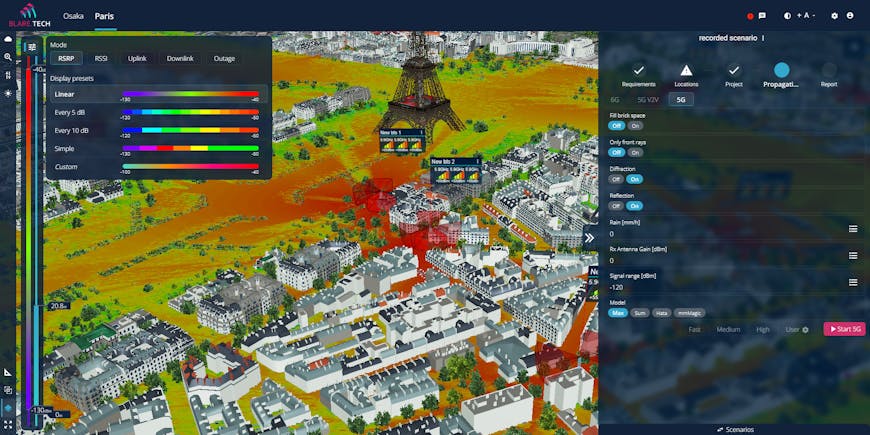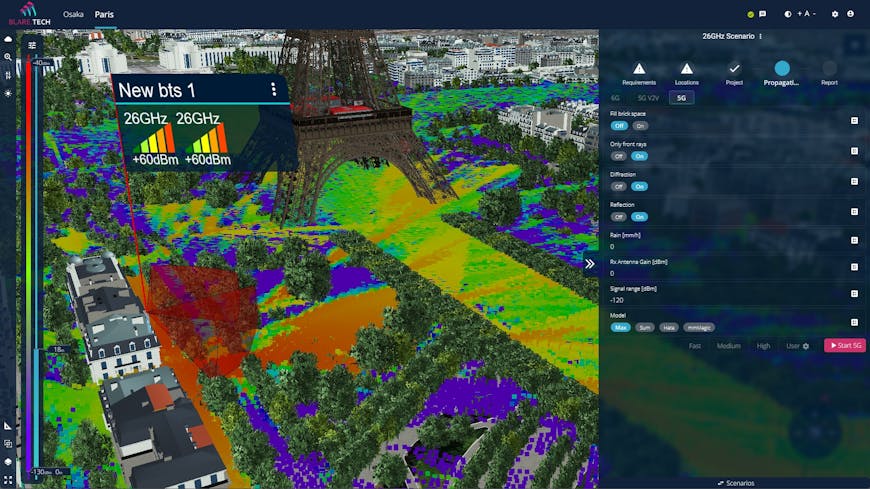Blare Tech Builds 5G Network Planning Tools with CesiumJS
Many existing network planning tools are dedicated to previous generations, like 4G. Because 5G is powerful but sensitive, Blare Technologies uses CesiumJS to plan modern networks with real-world context.
Blare Tech’s CesiumJS-powered tools are 90% faster than traditional network planning methods. Courtesy Blare Tech.
Poland-based Blare Tech serves enterprises, municipalities, and network planners all over Europe with digital twins and site candidate analysis and planning.
5G networks can use sub-6 GHz frequencies or millimeter waves (about 24-52 GHz) on the radio frequency spectrum, enabling swift transfer of even large amounts of data, like 8K ultra-high-definition video streaming. As frequency increases, so does transfer speed, but the range shortens, and the signal is more affected by buildings, vegetation, moving vehicles, and even weather. Blare Tech’s 5G tools are powered by CesiumJS to present and examine site candidates, which are locations for antennas and can number in the hundreds per square kilometer, in an accurate 3D environment to take local obstacles, restrictions, and existing infrastructure into account. These tools make the network planning process 90% faster than traditional methods, reducing required time to hours, down from days or even weeks.

5G is powerful but sensitive. Here, the color spectrum indicates reference signal received power (RSRP, signal strength); red is strong. Pictured is Paris, France. Courtesy Blare Tech.
Blare Tech originally used a game engine for visualization and simulation, but they wanted to show a larger area with accurate geospatial context and make the simulations available to anyone in the world. These 5G tools are online, with Cesium accessible on any device with a web browser. The company uses CesiumJS to visualize different kinds of data from its users, especially BIM and point clouds, on a high-precision WGS84 globe. Data is streamed as 3D Tiles to ensure massive datasets are served efficiently. For a number of projects, Blare Tech employs Cesium World Terrain and Bing Maps Aerial imagery for accurate, realistic settings.
“For us, it was really important to have the engine for simulation and efficient rendering anywhere on the globe. Cesium was the choice,” said Lukasz Blaszkowski, CTO of Blare Tech.

Blare Tech chose CesiumJS for its 5G tools to show large areas with accurate geospatial context and make the simulations available to anyone in the world. Courtesy Blare Tech.
With 5G powering IoT devices, meetings, and games, planning modern networks must be done efficiently and accurately. Bring collaboration and real-world data to your planning apps with CesiumJS.